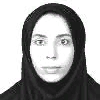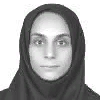International Journal of Image, Graphics and Signal Processing (IJIGSP)
IJIGSP Vol. 5, No. 4, 8 Apr. 2013
Cover page and Table of Contents: PDF (size: 704KB)
Spectral and Time Based Assessment of Meditative Heart Rate Signals
Full Text (PDF, 704KB), PP.1-10
Views: 0 Downloads: 0
Author(s)
Index Terms
Heart rate variability, Meditation, Model order estimation, Spectral analysis, Time domain analysis
Abstract
The objective of this article was to study the effects of Chi meditation on heart rate variability (HRV). For this purpose, the statistical and spectral measures of HRV from the RR intervals were analyzed. In addition, it is concerned with finding adequate Auto-Regressive Moving Average (ARMA) model orders for spectral analysis of the time series formed from RR intervals. Therefore, Akaike's Final Prediction Error (FPE) was taken as the base for choosing the model order. The results showed that overall the model order chosen most frequently for FPE was p = 8 for before meditation and p = 5 for during meditation. The results suggested that variety of orders in HRV models upon different psychological states could be due to some differences in intrinsic properties of the system.
Cite This Paper
Ateke Goshvarpour,Mousa Shamsi,Atefeh Goshvarpour,"Spectral and Time Based Assessment of Meditative Heart Rate Signals", IJIGSP, vol.5, no.4, pp.1-10, 2013. DOI: 10.5815/ijigsp.2013.04.01
Reference
[1]Brefczynski-Lewis JA, Lutz A, Schaefer HS, Levinson DB, Davidson RJ (2007) Neural correlates of attentional expertise in long-term meditation practitioners. PNAS 104:11483–11488
[2]Jevning R, Wallace RK, Beidebach M (1992) The physiology of meditation – a review – a wakeful hypometabolic integrated response. Neurosci Biobehav Rev 16:415–424
[3]Goshvarpour A, Goshvarpour A (2012) Comparison of higher order spectra in heart rate signals during two techniques of meditation: Chi and Kundalini Meditation. Cogn Neurodyn: DOI 10.1007/s11571-012-9215-z
[4]Goshvarpour A, Goshvarpour A, Rahati S (2011) Analysis of lagged Poincaré plots in heart rate signals during meditation. Digital Signal Processing 21(2): 208–214
[5]Goshvarpour A, Goshvarpour A (2012) Physiological and neurological changes during meditation. Young Nurses Mashhad Iran, 1–152 [text in persian]
[6]Goshvarpour A, Rahati S, Goshvarpour A, Saadatian V (2012) Estimating the Depth of Meditation Using Electroencephalogram and Heart Rate Signals. ZUMS Journal 20 (79): 44–54
[7]Goshvarpour A, Goshvarpour A (2012) Chaotic behavior of heart rate signals during Chi and Kundalini meditation. IJ Image, Graphics and Signal Processing 2: 23–29
[8]Task Force of the European Society of Cardiology and the North American Society of Pacing and Electrophysiology (1996) Heart rate variability—Standards of measurement, physiological interpretation, and clinical use. Circulation 93 (5): 1043–1065
[9]Acharya UR, Joseph KP, Kannathal N, Lim CM, Suri JS (2006) Heart rate variability: A review. Med. Biol. Eng. Comput. 44: 1031–1051
[10]Cerutti S, Bianchi AM, Mainardi LT (1995) Spectral analysis of the heart rate variability signal Heart Rate Variability. ed Malik M and Camm A J (Armonk NY: Futura Publishing Company) pp 63–74.
[11]van Ravenswaaij-Arts CMA, Kollee LAA, Hopman JCW, Stoelinga GBA, van Geijn HP (1993) Heart rate variability. Ann. Internal Medicine 118: 4–47
[12]Akay M, Semmlow JL, Welkowitz W, Bauer MD, Kostis JB (1990) Noninvasive detection of coronary stenoses before and after angioplasty using eigenvector methods. IEEE Trans. Biomed. Eng. 37 (11): 1095–1104
[13]Ubeyli ED, Guler I (2003) Comparison of eigenvector methods with classical and model-based methods in analysis of internal carotid arterial Doppler signals. Comput. Biol. Med. 33 (6): 473–493
[14]Phongsuphap S, Pongsupap Y, Chandanamattha P, Lursinsap C (2008) Changes in heart rate variability during concentration meditation. International Journal of Cardiology 130: 481–484
[15]Colak OH (2009) Preprocessing effects in time–frequency distributions and spectral analysis of heart rate variability. Digital Signal Processing 19: 731–739
[16]Engin M (2007) Spectral and wavelet based assessment of congestive heart failure patients, Computers in Biology and Medicine 37: 820–828
[17]Proakis JG, Manolakis DG (1996) Digital Signal Processing Principles, Algorithms, and Applications. Prentice-Hall, New Jersey
[18]Marple L (1977) Resolution of conventional Fourier, autoregressive and special ARMA methods of spectral analysis. Proc. IEEE International Conference on ASSP: 74–77
[19]Kay SM, Marple SL (1981) Spectrum analysis—a modern perspective. Proc. IEEE 69: 1380–1419
[20]Boardman A, Schlindwein FS, Rocha AP, Leite A (2002) A study on the optimum order of autoregressive models for heart rate variability. Physiol.Meas. 23: 325–336
[21]Akaike H (1974) A new look at the statistical model identification. IEEE Trans. Autom. Control 19: 716–723
[22]Priestley MB (1981) Spectral Analysis and Time Series. Academic Press, New York
[23]Parzen E (1975) Multiple Time Series: Determining the Order of Approximating Autoregressive Schemes. Technical report no.23, Statistical Sciences Division, State University of NewYork, Buffalo, NY.
[24]Rissanen J (1984) Universal coding, information prediction and estimation. IEEE Trans. Inf. Theory 30: 629–636.
[25]Jones RH (1974) Identification and autoregressive spectrum estimation. IEEE Trans. Autom. Control 19: 894–897.
[26]Peng C-K, Mietus JE, Liu Y, Khalsa G, Douglas PS, Benson H, Goldberger AL (1999) Exaggerated heart rate oscillations during two meditation techniques. Int J Cardiol 70: 101–107
[27]Cohen A (1986) Biomedical Signal Processing. Vol. I, CRC, Boca Raton, FL.
[28]Pisarenko VF (1973) The retrieval of harmonics from a covariance function. Geophys J R Astron Soc 33: 347–366.
[29]Semmlow JL, Akay M, Welkowitz W (1990) Noninvasive detection of coronary artery disease using parametric spectral analysis methods. IEEE Eng Med Biol Mag 9 (1): 33–36.
[30]Schmidt RO (1986) Multiple emitter location and signal parameter estimation. IEEE Trans Antennas Propag AP-34 (3) 276–280.
[31]Kumaresan R, Tufts DW (1983) Estimating of the angles of arrival of multiple plane waves. IEEE Trans Aerosp Electron Systems AES-19 (1): 134–139.
[32]Reddi SS (1979) Multiple source location—a digital approach. IEEE Trans Aerosp Electron Systems AES-15 (1): 95–105.
[33]Kumaresan R, Tufts DW (1983) Estimating the angles of arrival of multiple plane waves. IEEE Trans. AES 19: 134–139
[34]Signal Processing Toolbox for use with MATLAB, version 6, MathWorks, Inc.
[35]Swindlehurst AL, Kailath T (1992) A performance analysis of subspace-based methods in the presence of model errors, Part I: the MUSIC algorithm. IEEE Trans. Signal Process. 40 (7): 1758–1774
[36]Friedlander B, Weiss AJ (1994) Effects of model errors on waveform estimation using the MUSIC algorithm. IEEE Trans. Signal Process. 42 (1): 147–155
[37]Friedlander B (1990) A sensitivity analysis of the MUSIC algorithm. IEEE Trans. Acoust. Speech Signal Process. 38 (10): 1740–1751
[38]Porat B, Friedlander B (1988) Analysis of the asymptotic relative effciency of the MUSIC algorithm, IEEE Trans. Acoust. Speech Signal Process. 36 (4): 532–544
[39]P. Stoica, A. Nehorai, MUSIC, maximum likelihood, and Cramer-Rao bound, IEEE Trans. Acoust. Speech Signal Process. 37 (5) (1989) 720–741.
[40]Stoica P, Nehorai A (1990) MUSIC, maximum likelihood, and Cramer-Rao bound: further results and comparisons. IEEE Trans. Acoust. Speech Signal Process. 38 (12): 2140–2150
[41]Kaveh M, Barabell AJ (1986) The statistical performance of the MUSIC and the minimum-norm algorithms in resolving plane waves in noise. IEEE Trans. Acoust. Speech Signal Process. ASSP 34 (2): 331–341.

